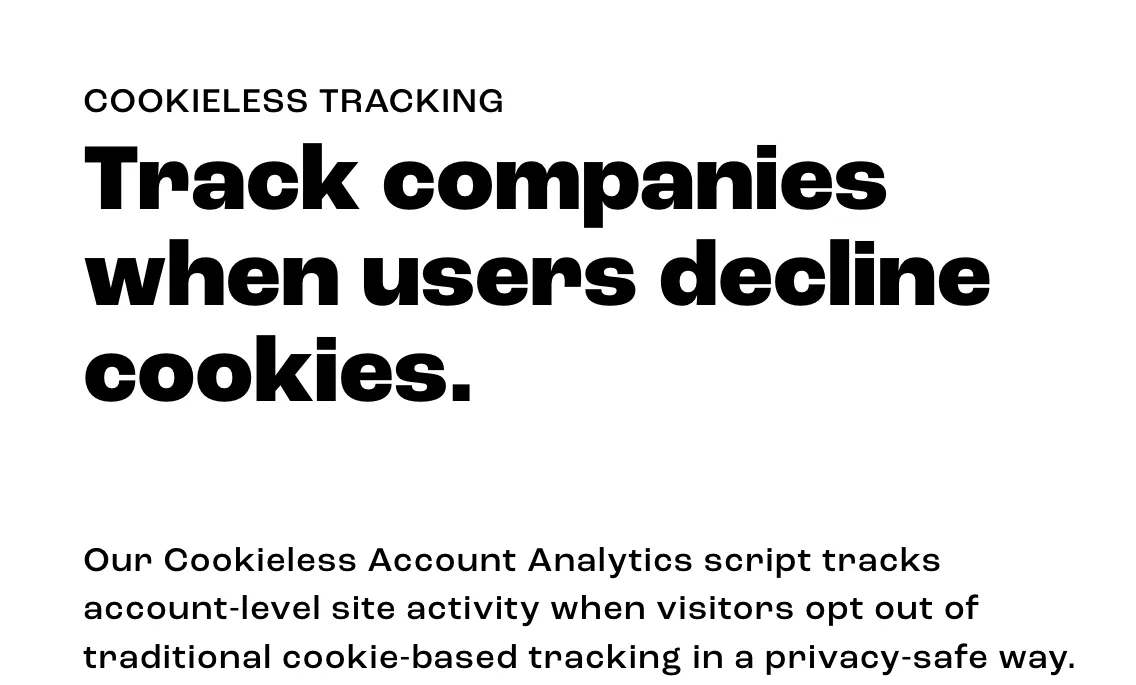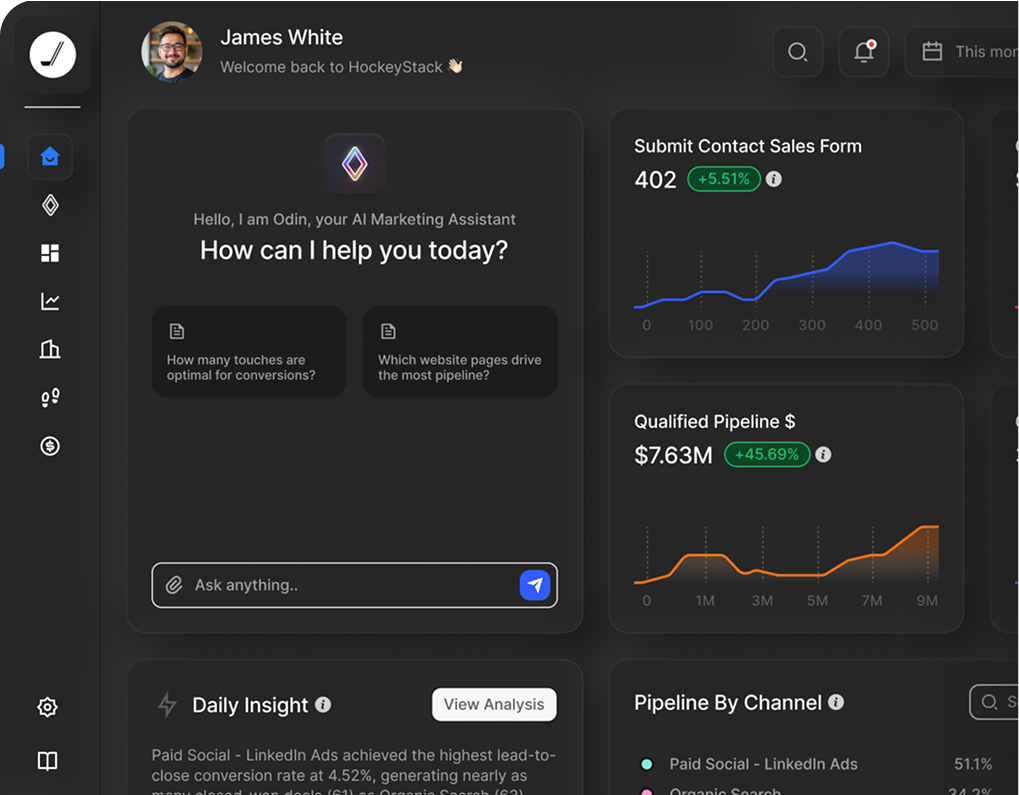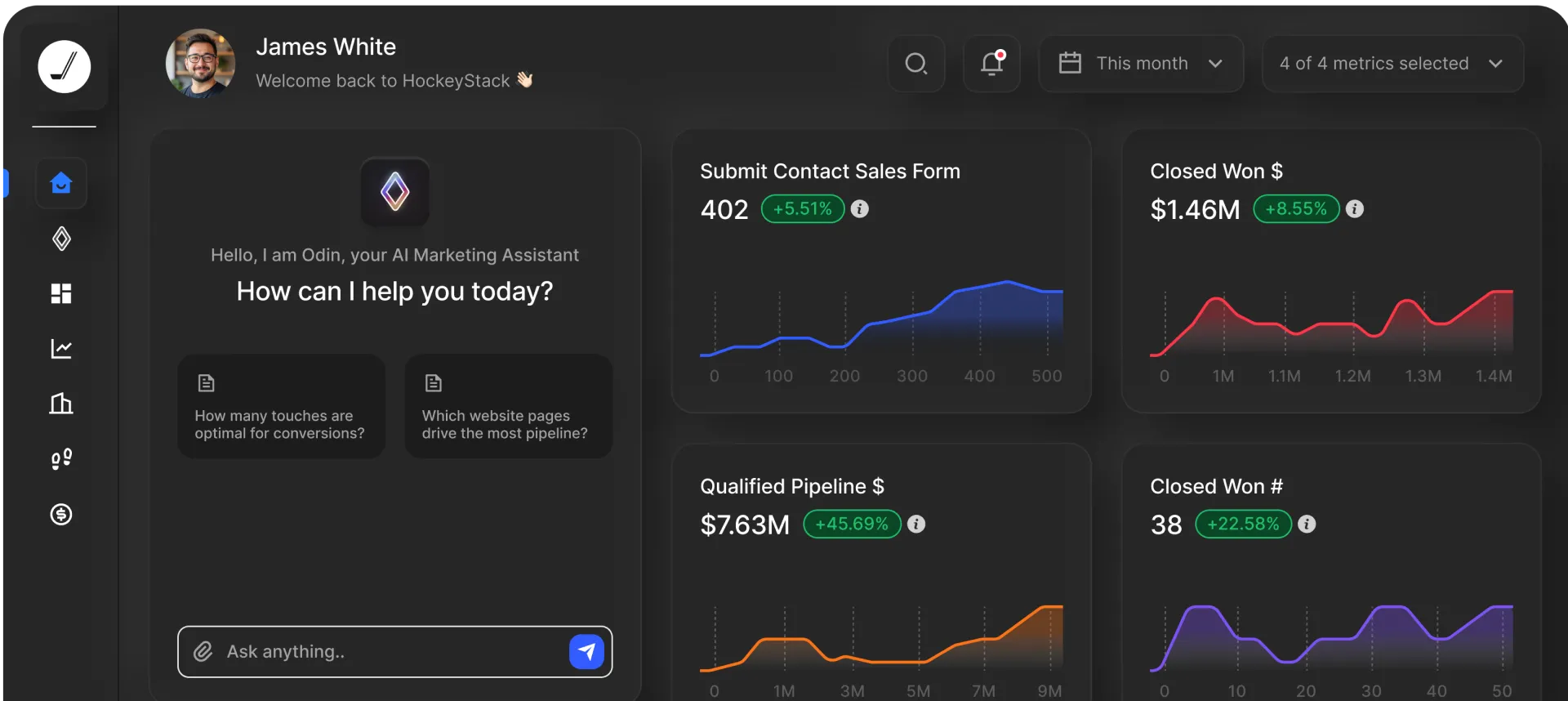Dreamdata vs. HockeyStack: Two Approaches to B2B Web Tracking

Dreamdata vs. HockeyStack: Two Approaches to B2B Web Tracking

As the B2B world moves deeper into a privacy-first, cookieless era, accurate web tracking has become the foundation of modern go-to-market analytics. Tools must balance three competing priorities: accuracy, identity resolution, and compliance.
Dreamdata and HockeyStack are two widely evaluated platforms in this space, and while our technical approaches differ, we share more common ground than many assume.
This article breaks down where both platforms agree, where we diverge, and why HockeyStack takes a fundamentally different approach to identity, accuracy, and cross-device continuity.
Where HockeyStack and Dreamdata Agree
Despite surface-level contrasts, both companies share several foundational beliefs about the future of B2B tracking.
1. The Cookieless Future Is Already Here
Both HockeyStack and Dreamdata agree that:
- Third-party cookies are disappearing
- Browsers like Safari, Firefox, and soon Chrome reduce cookie lifetime
- Marketers need durable alternatives
- Privacy and user consent must shape the next era of analytics
The difference isn’t in whether the world is going cookieless — we both see this as inevitable. We diverge only in how we enable tracking in this world.
2. First-Party Data Is the Only Sustainable Path Forward
Both platforms actively promote first-party data as the backbone of B2B GTM analytics.
Shared beliefs include:
- First-party data leads to better enrichment
- It enables higher-fidelity intent
- Companies should avoid dependence on third-party trackers
- Data should be owned by the business, not rented from ad networks
While Dreamdata emphasizes first-party cookies and consent banners, HockeyStack emphasizes first-party identifiers generated through cookieless methods due to the reasons outlined above, but the philosophical commitment is the same.
3. Privacy Compliance Must Be Core to Tracking
HockeyStack and DreamData both prioritize:
- GDPR compliance (both companies are SOC2 Type II Certified and GDPR compliant)
- User consent and transparency
- Secure data storage
- Not selling or sharing data with third parties
- Allowing end-users to delete their data
This shared commitment has shaped how each approaches identity, tracking methods, and data modeling, even if the underlying technology differs.
Where Our Approaches Begin to Diverge
Beyond shared beliefs, the platforms take two very different strategic paths, especially in how we view the role of durable identifiers, cross-device continuity, and anonymous tracking.
Below, we outline the technical and philosophical differences that most impact accuracy, attribution, and identity resolution.
1. Tracking Methodology: Cookies vs. Cookieless Fingerprinting
Dreamdata’s Approach
Dreamdata explicitly rejects fingerprinting, calling it:
- “A huge privacy concern”
- “Persistent tracking without consent”
- “A privacy nightmare for users”
- “Not GDPR compliant”
.png)
Instead, they rely on:
- First-party cookies
- Local storage
- User identification via form submissions
- IP-to-company lookup
Most importantly: Dreamdata’s cookieless tracking is a fallback mechanism, not their primary method.
Their own product page makes this clear:
“Our Cookieless Account Analytics script tracks account-level site activity when visitors opt out of traditional cookie-based tracking… It doesn’t identify who the visitor is.”
This fallback collects company-level, not user-level, data.
It’s designed only to avoid losing all visibility when users reject cookies, not to maintain continuity or identity.
HockeyStack’s Approach
HockeyStack takes a different route:
- Default cookieless tracking via hashed fingerprinting
- Durable identifiers that persist across browsers and devices
- Ability to switch to cookie mode at any time
- Full event tracking via DOM listeners
The result: HockeyStack maintains continuity across devices and sessions even before a visitor identifies themselves.

The Key Difference:
For Dreamdata, cookieless tracking is a limited backup plan.For HockeyStack, cookieless tracking is the foundation.
Dreamdata’s version identifies companies. HockeyStack’s identifies user journeys.
2. Cross-Device Continuity
Dreamdata
Dreamdata acknowledges major limitations:
- Cookies expire
- Browsers restrict lifetime
- Users who switch devices create fragmented journeys
This is why Dreamdata relies heavily on declared identifiers and writes:
“The anonymous journey is stored… awaiting later association to an email… added as the user identifies themselves.”
If a user never identifies, their journey is never connected.
Cross-device stitching for Dreamdata requires:
- A form fill
- Login
- Email matching in CRM
Without these, journeys remain fragmented.
And with ITP/ETP, cookie resets are frequent.
HockeyStack
- Fingerprinting enables durable identity across devices
- Anonymous → personal → business email journeys remain unified
- Browser changes don’t fragment identity
- User’s full history is preserved even before identification
Cross-device continuity is one of the biggest practical differences between the platforms.
3. Identity Resolution and Journey Stitching
Dreamdata’s Identity Model
Dreamdata connects identities when:
- A user fills out a form
- CRM systems match an email
- IP mapping identifies a company
- Paid media integrations add account-level signals
This is effective, but still dependent on declared identifiers.
HockeyStack’s Identity Model
HockeyStack automatically unifies:
- Anonymous sessions
- Personal email sessions
- Business email sessions
- Cross-device interactions
- Cross-domain engagements
This is done through:
- Device & Network Fingerprinting
- Reverse IP company mapping
- Cross-identity matching
- Full account timeline consolidation
The outcome is a complete, unbroken, timestamped journey from first touch through closed-won.
4. Cookieless Tracking: Two Very Different Definitions
Dreamdata’s Cookieless Offering
Dreamdata’s cookieless tracking:
- Helps identify companies viewing the site
- Uses IP-to-company lookup
- Does not maintain user-level identity
- Helps with account analytics rather than contact analytics
This ensures privacy but limits granularity.
HockeyStack’s Cookieless Offering
HockeyStack’s cookieless tracking:
- Tracks unique visitors with a hashed, irreversible fingerprint
- Debuts as the default tracking mode
- Maintains cross-session continuity
- Still respects user consent and collects no PII
This leads to more complete journeys and higher attribution accuracy.
5. Approach to Privacy and Compliance
Dreamdata takes a stringent regulatory perspective, advocating strongly for consent-based, cookie-first tracking and positioning it as the safest path for marketers.
HockeyStack takes a different route: prioritizing consent while employing a more modern, hashed-identifier method that avoids storing personal information and ensures the identifier cannot be reversed into raw data.
Both approaches center privacy, but the technical execution differs dramatically.
The Bottom Line
Both HockeyStack and Dreamdata are aligned on the future:
- The cookieless era is here
- First-party data is the foundation of modern GTM
- Privacy and consent must be respected
- Marketers need full-funnel visibility
- Anonymous journeys matter
But the way each platform interprets and implements these principles could not be more different.
Dreamdata champions a traditional, cookie-first model supplemented by consent banners and company-level IP lookups.
HockeyStack champions a modern, durable, cookieless fingerprinting approach designed for accuracy, identity stitching, and frictionless implementation.
Why HockeyStack’s Approach Leads the Next Generation of GTM Analytics
HockeyStack’s tracking infrastructure delivers:
- Cross-device and cross-browser continuity
- Unified personal + business identity stitching
- Complete anonymous-to-known journeys
- Strong privacy model without relying on PII
- More accurate attribution and journey mapping
- No-code, event-level tracking out of the box
As cookies continue to decline, these capabilities define the future of B2B go-to-market analytics, enabling companies to finally answer the hardest questions about what truly drives pipeline and revenue.
What is Warm Outbound & How to Implement It in Your Sales Process?
Struggling with cold outreach? Explore warm outbound sales strategies that increase response rates and conversions. Get actionable tips to implement in your sales process today.


Ready to see HockeyStack in action?
HockeyStack turns all of your online and offline GTM data into visual buyer journeys and dashboards, AI-powered recommendations, and the industry’s best-performing account and lead scoring.

Ready to See HockeyStack in Action?
HockeyStack turns all of your online and offline GTM data into visual buyer journeys and dashboards, AI-powered recommendations, and the industry’s best-performing account and lead scoring.



